How Are Fiber Optic Reflectors Applied to PON Network Link Monitoring?
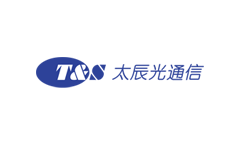



In the PON (Passive optical network, passive optical network) network, especially the complex point-to-multipoint PON ODN (Optical distribution network, optical distribution network) topology environment, the rapid monitoring and diagnosis of optical fiber faults has become challenging work.
Although optical time domain reflectometer (OTDR) tools are widely used at present, OTDR detection is sometimes not particularly sensitive to the attenuation of optical signals at the ends of some ODN branch fibers or ONU fibers.
Installing a low-cost wavelength-selective optical fiber reflector on the ONU side is often used at present, through which accurate detection of the end-to-end attenuation of the optical link can be achieved.
1. The working principle of fiber optic reflectors
It mainly uses the fiber grating to reflect the test light pulse sent by the OTDR with a reflectivity of nearly 100%, while the working wavelength of the normal passive optical network (PON) system passes through with a small attenuation because it does not satisfy the Bragg condition of fiber grating.
The main function of this is that, by detecting the existence of the reflected OTDR test signal and the intensity of the optical signal, the return loss value of the reflection event at the end of each ONU branch can be accurately calculated.
Thus, it is judged whether the optical link from the OLT side to the ONU side is normal. This enables real-time monitoring of fault points and fast and accurate diagnosis.
By flexibly deploying the position of the reflector and identifying different ODN sections, the detection and location of the ODN fault point and the cause analysis can be quickly realized, which reduces the fault processing time and improves the test efficiency and line maintenance quality.
2. The role of fiber optic reflectors in different levels of scenes
In the first-level splitting scenario, if the return loss of the reflector of a certain home fiber branch increases significantly compared with the return loss value of the health file, it indicates that the optical fiber of this branch is There is a problem with the link; if all of the fiber branches with fiber reflectors have significant return loss increase at the same time, it is an indication that the trunk fiber is faulty.
In the secondary optical splitting scenario, the difference in return loss can also be compared to accurately locate whether the attenuation fault has occurred in the distribution fiber segment or the home fiber segment.
Whether it is a first-level or second-level splitting scenario, since the reflection peak will drop sharply at the end of the OTDR test curve, the return loss value of the longest branch link in the ODN network may not be accurately measured, and it is necessary to measure the reflector.
The
optical fiber reflector can be conveniently placed in series at the
user end. It has the characteristics of long life, stability, reliability,
and easy connection of the adapter structure. It is also one of the
reasons why the optical fiber reflector is an ideal optical end choice
for FTTx network link monitoring.
As a fiber optical accessories supplier, T&S Communications today takes a leading role in OEM and ODM service for optical fiber termination solutions. Based on T&S Communications’s excellent comprehensive capabilities, T&S Communications is dedicated to bringing fiber optical components with superior performance to next-generation communications in a green, pragmatic, and cost-effective manner.
- |
- +1 赞 0
- 收藏
- 评论 0
本文由出山转载自T&S News,原文标题为:How Are Fiber Optic Reflectors Applied to PON Network Link Monitoring?,本站所有转载文章系出于传递更多信息之目的,且明确注明来源,不希望被转载的媒体或个人可与我们联系,我们将立即进行删除处理。
相关推荐
The Difference Between Armored Jumper and Ordinary Fiber Optic Jumper
Based on T&S Communications’ excellent comprehensive capabilities, T&S Communications are dedicated to bringing fiber optical components with superior performance to next-generation communications in a green, pragmatic, and cost-effective manner.
技术探讨 发布时间 : 2023-09-06
How Can Fiber Reflector Be Used in PON Network Link Monitoring?
Installing a low-cost wavelength-selective fiber reflector on the ONU side is often used at present, through which accurate detection of the end-to-end attenuation of the optical link can be achieved.
技术探讨 发布时间 : 2023-08-31
What is Passive Optical Network (PON) ?
A passive optical network (PON) is a fiber optic network that uses a point-to-multipoint topology and optical splitters to transmit data from a single transmission point to multiple user endpoints. Passive here refers to the unpowered state of the fiber and its splitting/combining components.
技术探讨 发布时间 : 2023-08-17
How to Plan the Future 5G Fiber Network?
Based on T&S Communications’s excellent comprehensive capabilities, T&S Communication is dedicated to bringing fiber optical components with superior performance to next-generation communications in a green, pragmatic, and cost-effective manner.
设计经验 发布时间 : 2023-10-13
太辰光(T&S)光纤连接器选型指南
目录- 公司简介 Company profile 陶瓷插芯 Ceramic Ferrule 光纤连接器 Fiber Optic Cable Assembly 光纤元器件 Fiber Optic Components 波分复用器 WDM FBT光纤耦合器 FBT Coupler PLC分路器 PLC Splitter 光纤光栅 Fiber Bragg Grating 光纤模块、有源光缆及有源电缆 Fiber Optic Transceivers,AOC&DAC
型号- FOT-SC/APC,CG-XX/G652D/1.5M,D12F-SC/UPC/SM/∅0.9/L/L1M,SMC-P-1X2-163/15-10/90-FC/APC-1-G652D-∅3X60,FEN-SC-S4,FEN-SC-S5,MC-FC/APC-FC/UPC/SM/∅3/L,FEN-SC-S1,PM-FC/UPC(N)-FC/UPC(N)/1550/∅2/L-SA,FEN-SC-S2,FEN-SC-S3,ATIL-FC/APC/SM/05/NP/L,MPO/APC/12F-FC/UPC/SM/∅0.9-L/L1-RJ,PLC-1X8-A-09/L1-LC/UPC-09/L2-LC/UPC
太辰光新型光纤超声传感器,用于捕捉局部放电事件中产生的超声波信号,探测距离可长达1.0m
太辰光始终重视核心技术研究和技术体系建设,着眼用户需求进行技术融合和产品应用开发,不断实现核心技术创新和产品技术突破,其新推出的光纤超声传感器是一种采用法布里-珀罗(F-P)谐振腔作为敏感单元的新型光纤器件,可用于捕捉局部放电事件中产生的超声波(频率≥20 kHz 的声波)信号。
产品 发布时间 : 2024-10-26
太辰光(T&S)光纤通信产品选型指南
描述- 深圳太辰光通信股份有限公司成立于2000年,于2016年12月在深圳证券交易所创业板上市,证券代码300570,公司的主营业务为各种光通信器件及其集成功能模块的研发、生产和销售。光通信器件主要包括高密度光纤连接器、常规光纤连接器件、PLC光分路器、波分复用器等无源光器件、光模块、有源光缆等有源光器件以及陶瓷插芯、MT插芯,平面光波导晶圆和芯片等基础元器件。
型号- TSSLS-NCNEE3C,400G QSFP-DD TO 4X100G QSFP56 AOC,200G QSFP56 SR4,400G QSFP-DD TO 8X50G SFP56 DAC,TSSLS-NXXCE3T,TSQM4-NAAJB1C,TSQS-PC40G-XXM,TSD4Q-85M-XXXC,TS-RD1,TS-RD1-1U,TSD8S-85M-XXXC,TSQSQ-85G-XXXC,TSQ45-85G-XXXC,TSQM4-NAAJB1T,TS-FD2,TSSLS-NXXCE3C,TS-FD1-1U,TS-FD1,40G QSFP+TO 4X10G SFP+DAC,PD2-6M,TSSLS-NCNEH8C,40G QSFP+ TO 4X10G SFP+ AOC,TSQS-PC56G-XXM,FEN-LH-SMA,TS-FD2 SERIES,56G QSFP+DAC,40G QSFP+ ER4,TSQD-PC4HG-XXM,200G QSFP56 AOC,10G SFP+ ZR,FEN-LH-LC,100G QSFP28 PSM4,TSSLS-CXXEE3C,25G SFP28 SR,TSSLS-NAACBIT,TSSLS-NAAEAIT,TSQDQ-4PC1HG-XXM,100G QSFP28 AOC,TSSLS-NAACB1C,TSSLS-NAAEA1C,FEN-LH-SDL,10G SFP+ DWDM,MD2-1M24L,TSQL4-E11GH7C,TSQSS-PC2HG-XXM,TSQL4-F22JH4C,FES-LC-PA,25G SFP28 DAC,25G SFP28 CWDM,400G QSFP-DD DAC,400G QSFP-DD DR4,TSSLS-NCNCE3C,400G QSFP-DD TO 2X200G QSFP56 DAC,MD1-3M24L,TSSP-PC25G-XXM,TSD2Q-85L-XXXC,200G QSFP56 TO 4X50G SFP56 AOC,56G QSFP+ AOC,TSSP-PC56G-XXM,TSQS-PC2HG-XXM,100G QSFP28 SR4,10G SFP+ LR,TSQM4-NCNJC3C,TSQSS-PC1HG-XXM,TS-RD1 SERIES,TSSSS-85H-XXXC,TSQDQ-2PC2HG-XXM,50G SFP56 AOC,40G QSFP+ DAC,TS-FD1 SERIES,TSQSQ-85H-XXXC,TSQM4-NAALAIC,FEN-SC-FUNNEL-1,PD2-24L,FEN-SC-FUNNEL-2,TSQM4-NAAGB1C,TSQM4-NAAGBIT,TSSSS-85E-XXXC,40G QSFP+ LR4,TSSLS-CXXCE3C,FES-SC-PA,TSQS-PC1HG-XXM,200G QSFP-DD TO 2X100G QSFP28 AOC,100G QSFP28 TO 2X50G QSFP28 AOC,TSSLS-DXXEE4C,10G SFP+ DAC,25G SFP28 BIDI,TSSLS-NCNEE3T,100G QSFP28 LR4,TSQ4S-85L-XXXC,TSQSQ-85L-XXXC,100G QSFP28 DAC,TSDM4-NCNMC3C,25G SFP28 ER,10G SFP+ AOC,10G SFP+ BIDI,400G QSFP-DD TO 8X50G SFP56 AOC,800G QSFP-DD AOC,TSQM4-NCNGC3C,TSDR8-NAAMATC,TS-FD2-2U,10G SFP+ CWDM,10G SFP+SR,FEN-LC-2,25G SFP28 DWDM,TSSSS-85C-XXXC,TSDSD-85N-XXXC,100G QSFP28 TO 4X25G SFP28 AOC,TSQDS-8PC50G-XXM,800G QSFP-DD SR8,10G SFP+ ER,200G QSFP56 DAC,100G SFP-DD AOC,TSSLS-DXXCK8C,TSQ2Q-85J-XXXC,TSSLS-NCNCE3T,TSQSQ-PC2HG-XXM,TSD2Q-85M-XXXC,FEN-LH-SC,TSSLS-NXXEE3T,200G QSFP56 FR4,40G QSFP+ AOC,50G SFP56 DAC,100G QSFP28 TO 4X25G SFP28 DAC,100G QSFP28 ER4,FEN-SC-1,TSDSD-85M-XXXC,400G QSFP-DD FR4,TSDL4-E11MD3C,100G QSFP28 CWDM4,TSSLS-NXXEE3C,25G SFP28 LR,40G QSFP+PSM4,TSQL4-F22JE3C,400G QSFP-DD TO 2X200G QSFP56 AOC,TSTST-85K-XXXC,400G QSFP-DD AOC,TSQSQ-85J-XXXC,TSQ4S-85J-XXXC,TSD85-85L-XXXC,TSQL4-E11JE3C,TSDR8-NAANA1C,TSSLS-NCNCKBC,200G QSFP56 TO 4X50G SFP56 DAC,TSQL4-E11LD3C,400G QSFP-DD TO 4X100G QSFP56 DAC,200G QSFP-DD TO 8X25G SFP28 AOC,TSSLS-NCNCH4C,MD1-2M6M,200G QSFP56 TO 2X100G QSFP56 DAC,25G SFP28 AOC,PD1-24L,TSQL4-E11GE3C,400G QSFP-DD SR8,40G QSFP+SR4,TSQSS-PC40G-XXM,TSSLS-DXXCH4C,TSSP-PC192-XXM
太辰光推出的保偏光纤连接器,具有高消光比≥23dB、高pitch精度、偏转角≤±3°的优势
保偏光纤连接器作为一种特殊类型的连接器,广泛应用于光纤传感、干涉测量、相干光传输及长距离双向光传输系统中。相比于常见的单芯保偏连接器,多芯保偏连接器可以传输多个保偏光信号,同时保持其偏振方向不变。
原厂动态 发布时间 : 2023-04-14
【元件】铭普新推小型化50G PON Combo OLT三模光器件,助力宽带迈向万兆时代
在光纤通信技术飞速发展的今天,10GPON网络已经规模部署,展望未来几年,是从千兆时代迈向万兆时代的关键阶段,50G PON方案脱颖而出,成为产业界一致认可的下一代支撑万兆时代全光接入的关键技术,Mentech铭普光磁成功研发出小型化50G PON Combo OLT三模光器件,助力50GPON产业发展。
产品 发布时间 : 2024-09-18
【产品】太辰光推出SEN-T-04型温度传感器,适用于电力电缆、石化管道、储油罐、地铁消防等领域温度监测
SEN-T-04型温度传感器是太辰光利用光想光栅固有的温度敏感特性感测温度,光纤光栅采用特殊方式封装,增加了传感器对温度的敏感性,防水性能好,响应速度快,特别适用于电力电缆、石化管道、储油罐、地铁消防、隧道防火、水利工程等领域的温度监测。
产品 发布时间 : 2022-06-12
太辰光收购两家国内高新技术企业并成立中日合资公司,专注研发制造传感用光纤光栅和各类光纤光栅传感器及传感监测系统和解决方案
太辰光成立于2000年,2016 年深交所A股上市。太辰光是全球知名光通信器件生产商,也是全球最大的陶瓷插芯和光纤连接器生产企业之一,公司早年成立光纤光栅传感事业部,专注研发制造传感用光纤光栅和各类光纤光栅传感器及传感监测系统和解决方案。
原厂动态 发布时间 : 2022-06-27
数据中心光互联技术及应用研讨会圆满落幕,太辰光介绍了自主研发的高密度、高可靠、低插损光背板连接技术
数据中心光互联技术及应用研讨会圆满落幕2020-09-23 11:23:199月10日,主题为“数据中心光互联技术及应用”的研讨会在深圳国际会展中心顺利召开,政府部门、中国联通、太辰光的领导和业内著名的技术专家、嘉宾参与会议研讨。
原厂动态 发布时间 : 2024-07-26
MTP®/MPO光纤连接器生产商、光器件研发制造专家太辰光签约世强,全线产品符合 IEC和 TIA标准
2022年1月1日,太辰光(股票代码:300570)与世强签订合作协议,授权世强代理旗下全线产品,太辰光的光互联基础元器件、PLC晶圆、陶瓷插芯、MT插芯、光连接器件等产品已上线平台,搜索“太辰光”即可查询相关资讯、申请免费样品。
公司动态 发布时间 : 2022-05-31
电子商城






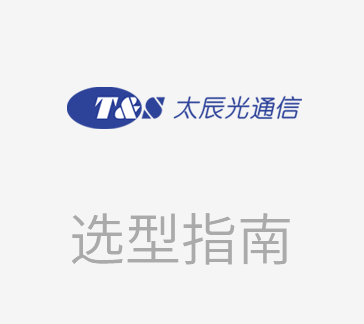
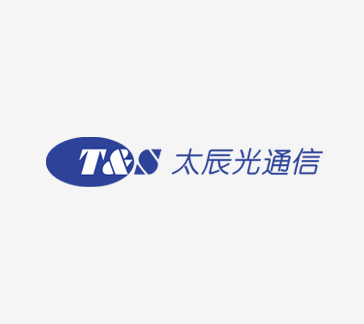
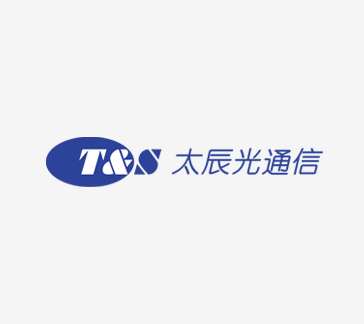
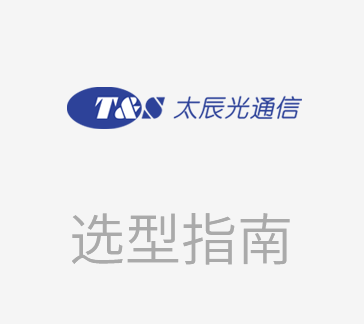
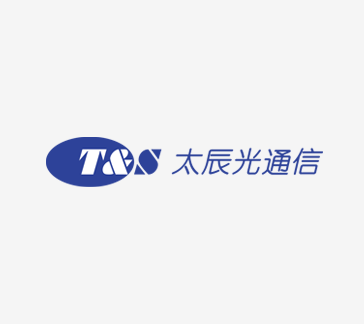


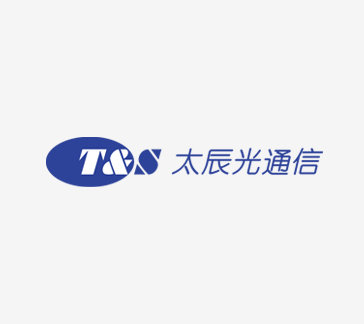
























































































































































































登录 | 立即注册
提交评论